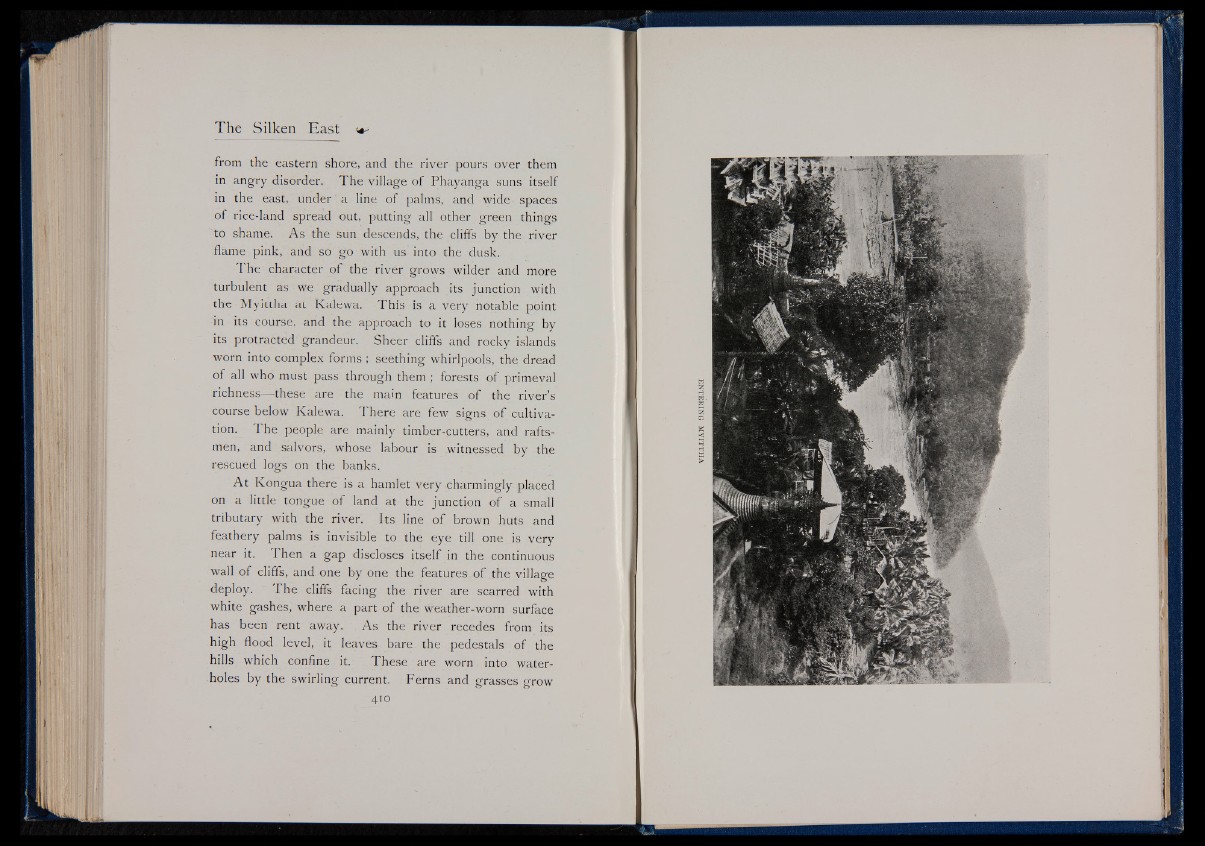
from the eastern shore, and the river pours over them
in angry disorder. The village of Phayanga suns itself
in the east, under a line of palms, and wide-spaces
of rice-land spread out, putting all other green things
to shame. As the sun descends, the cliffs by the river
flame pink, and so go with us into the dusk.
The character of the river grows wilder and more
turbulent as We gradually approach its junction with
the Myittha at Kalewa. This is a very notable point
in its course, and the approach to it loses nothing by
its protracted grandeur. Sheer cliffs and rocky islands
worn into complex forms ; seething whirlpools, the dread
of all who must pass through them ; forests of primeval
richness— these are the ma>n features of the river’s
course below Kalewa. 1 here are few signs of cultivation.
1 he people are mainly timber-cutters, and raftsmen,
and salvors, whose labour is witnessed by the
rescued logs on the banks.
At Kongua there is a hamlet very charmingly placed
on a little tongue of land at the junction of a small
tributary with the river. Its line of brown huts and
feathery palms is invisible to the eye till one is very
near it. Then a gap discloses itself in the continuous
wall of cliffs, and one by one the features of the village
deploy. The cliffs facing the river are scarred with
white gashes, where a part of the weather-worn surface
has been rent away. As the river recedes from its
high flood level, it leaves bare the pedestals of the
hills which confine it. These are worn into water-
holes by the swirling current. Ferns and grasses grow